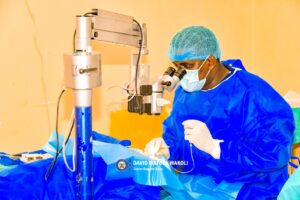
Gichuiya Nancy
Founding and Early Years (1969-1980s): The Pan Africa Paper Mills (PAP) was a flagship project in Kenya’s industrialization drive.

Established in 1969, it was a joint venture between the Kenyan government and international investors, with the primary objective of leveraging the country’s abundant forest resources for paper production. Situated in Webuye, a town in western Kenya blessed with rich forestry, PAP symbolized the nation’s aspirations for self-sufficiency and economic development.
In its formative years, PAP faced numerous challenges, including infrastructure development, technology acquisition, and skilled labor recruitment. However, with government support and strategic partnerships, the mill gradually overcame these obstacles and emerged as a significant contributor to Kenya’s manufacturing sector.
Expansion and Growth (1990s-2000s): The 1990s and early 2000s marked a period of expansion and modernization for PAP. The mill increased its production capacity, diversified its product range, and enhanced operational efficiency. With growing demand for paper products in Kenya and neighboring countries, PAP became a regional leader in the paper industry, exporting its products across East Africa.

During this time, PAP played a pivotal role in the socioeconomic development of Webuye and its surrounding areas. The mill provided stable employment opportunities for thousands of local residents, driving economic growth and fostering community development initiatives.
Challenges and Closure (2009): Despite its earlier successes, PAP encountered severe challenges in the late 2000s. Aging infrastructure, rising energy costs, and increased competition from imported paper products undermined the mill’s profitability. These factors, coupled with mismanagement issues, led to a decline in production and financial losses.
In 2009, PAP was forced to cease operations, sending shockwaves through the local community and sparking widespread concerns about job losses and economic downturn. The closure of the mill had ripple effects on ancillary industries and suppliers, exacerbating the socioeconomic challenges faced by Webuye and its residents.
Reopening and Restructuring (2013): After several years of dormancy, efforts were made to revive PAP and restore its former glory. In 2013, the Kenyan government, in collaboration with private investors and international partners, spearheaded the reopening of the mill. This initiative was part of a broader strategy to revitalize Kenya’s manufacturing sector and create employment opportunities in key industries.
The reopening of PAP was accompanied by a comprehensive restructuring plan aimed at addressing the root causes of its previous closure. Modernization of machinery, adoption of sustainable practices, and enhancement of operational efficiency were central to this revitalization effort. Additionally, measures were implemented to ensure compliance with environmental regulations and promote responsible resource management.
As of the present day, the Pan Africa Paper Mills continues to operate in Webuye, albeit with cautious optimism. The reopening of the mill has brought renewed hope to the local community, providing much-needed employment opportunities and stimulating economic activity in the region. However, significant challenges remain, including market volatility, regulatory uncertainties, and the need for ongoing investment in technology and infrastructure.
Looking ahead, the future prospects of PAP hinge on its ability to adapt to evolving market dynamics, embrace innovation, and maintain a sustainable business model. Collaboration between the government, private sector, and local stakeholders will be essential in ensuring the long-term viability and success of the mill. With strategic planning and collective effort, PAP can continue to be a symbol of resilience and progress in Kenya’s industrial landscape.






